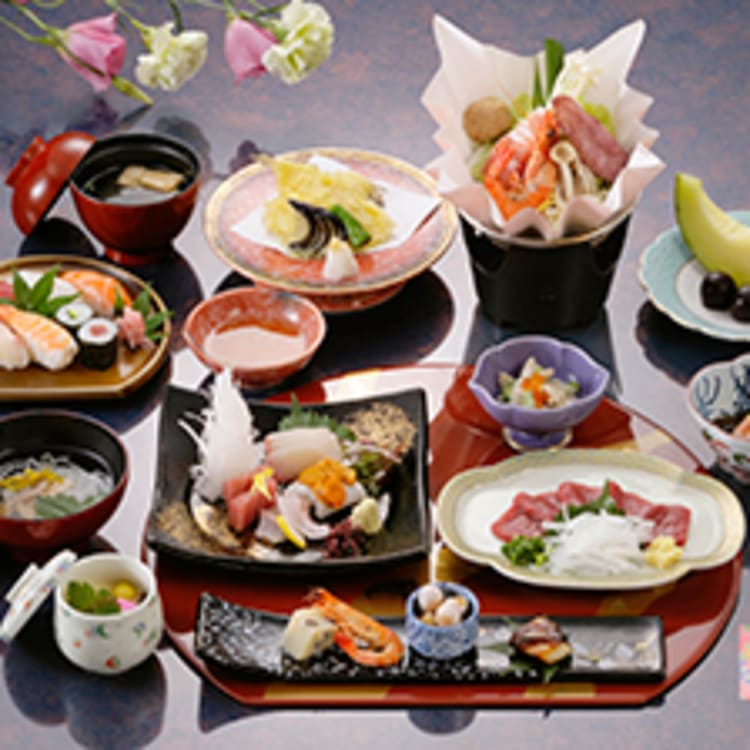
STORY Kanto vs Kansai: Battle of Cuisines by JNTO Gourmet on 20 July 2018
While Tokyo (Kanto region) and Osaka (Kansai region) are only 2.5 hours apart, the longstanding cultural rivalry between the two regions is so entertaining that it’s regularly discussed on Japanese TV shows. People in Kansai have their own dialect (Kansai-ben), sense of humour, and even escalator etiquette compared to their Kanto cousins, and some of the differences stem from their history: Kansai has a nobility and merchant culture, while Kanto is home to samurai culture. When you’re in Japan, simply sit down for a meal and you’ll easily notice the difference in their culture through their cuisine.
Flavours of the East and West
The general opinion is that food in Kanto (East) is stronger in flavour, while Kansai (West) flavours are more subtle and light.
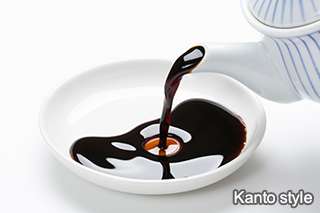
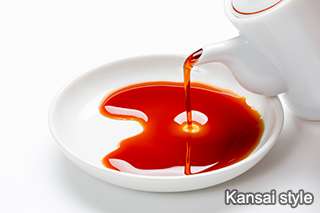
A comparison can be seen in something as simple as their soup broths: in Kansai, the broth is made with kombu (kelp) and light usukuchi soy sauce, while in Kanto it’s made with katsuo (bonito fish) and darker koikuchi soy sauce which is stronger in flavour.
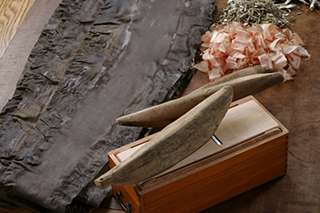
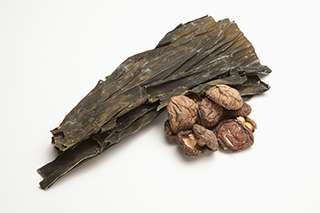
The former goes well with udon, the preferred noodle in Kansai, while the latter pairs well with soba which is a favourite in Kanto. Back to the Edo era, soba overtook udon in popularity in the bustling city of Tokyo since it was seen as more nutritious, while udon continues to rule in the Kansai region.
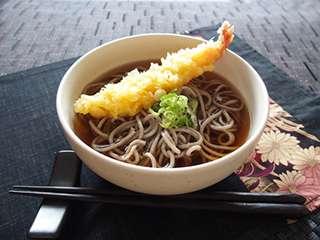
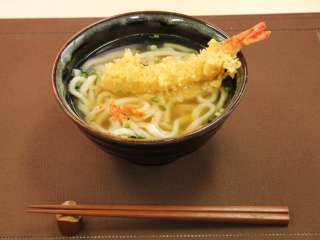
When it comes to miso, the lightly-flavoured sweet saikyo miso paste is more prevalent in Kansai cooking, and the more pungent aka (red) miso is more popular in Kanto.
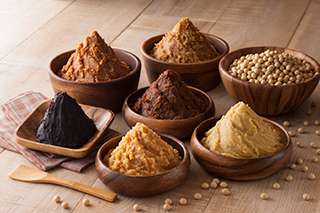
Delicate flavours are generally associated with wealth and the upper classes, and historically the merchant-class Kansai folks possessed greater wealth than the samurai classes, particularly towards the end of the Edo era. This meant that those from Kansai were able to afford better quality food, and till today, the region is renowned for its haute cuisine (kaiseki ryori), especially in Kyoto.
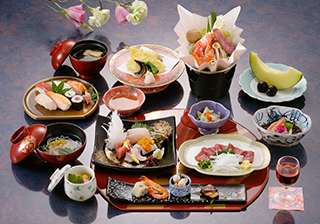
The Way of Food
Even the methods of consuming and preparing food are different between the two regions. One of the most popular foods in Kansai (especially Osaka) is okonomiyaki which we normally eat on its own like people in Kanto do, but in Osaka locals often eat it with rice as a set meal.
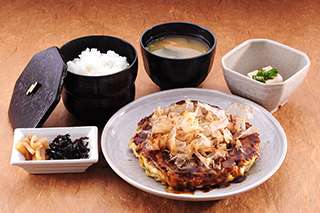
For tempura, Kansai folk prefer their deep-fried dish to consist of only vegetables which are then dipped in salt, while in Kanto, vegetables and fish are used, and dipped in a liquid sauce.
To make sukiyaki, in the Kansai region beef is browned with sugar before adding liquid ingredients and vegetables, while in Kanto the liquid ingredients are mixed together to make a warishita sauce for simmering the beef in.
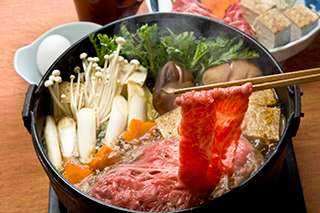
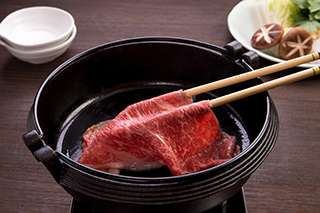
Even the process of slicing eels differ between regions. In Kansai, eels are cut open along the belly (hara-biraki), but in Kanto where samurai culture persists, slicing a fish along the belly reminded them of seppuku, so chefs cut them from the back instead (se-biraki).
All About Ingredients
If you’re in Kanto, your katsu (deep-fried meat), nikujaga (meat stew), and even curry rice will most likely be pork-based, while if you were in the Kansai region, beef is more common. Kansai cuisine has a stronger emphasis on beef because the region was traditionally – and remains – Japan’s cattle country. In Kanto, samurai warriors back in the day were more focused on breeding quality horses than cattle, so their cuisine relied on pork since pigs were easier to raise.
When it comes to sushi, it was more difficult geographically for Kansai to procure fresh fish from the ocean in the old days, so they specialised in oshizushi (pressed sushi with pickled fish), while in Kanto the rich supply of fresh fish from the bay popularised nigirizushi (rolled rice with raw fish) which consisted of red fish like tuna and bonito. In Kansai, there’s a preference for white fish like sea bream.
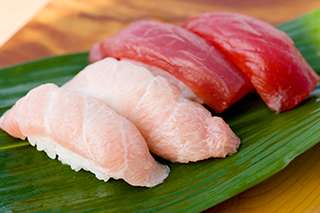
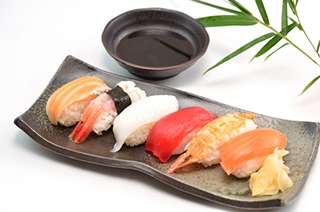
Throughout Japan, the most common form of chirashi sushi is the Kanto-style, which is vinegared rice topped usually with nine pieces of raw seafood, since people want variety. In Kansai, there are only five which are mixed into the rice – since they tend to celebrate the rice rather than only the ingredients.
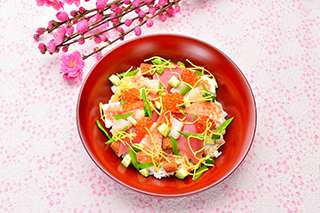
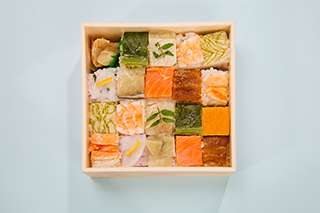
In the name
Kansai and Kanto also have slightly different names for the same type of food, for example:
Sliced raw fish: sashimi (Kanto); otsukuri (Kansai)
Red bean dessert pancake: imagawayaki (Kanto); obanyaki (Kansai)
Puffer fish: fugu (Kanto); tessa (Kansai)
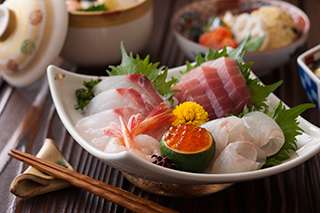
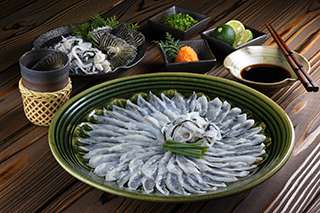
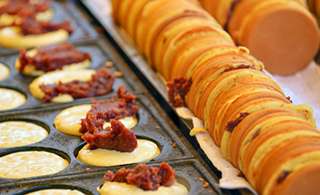
When visiting Japan, sampling the cuisines from these two regions is a great way to experience the cultural differences and appreciate both their unique backgrounds.
You can taste the difference between Kanto and Kansai cuisine at many restaurants, including these listed below:
Kansai cuisine in Kanto
Mimiu specialises in Kansai-style flavours and pays special attention to their light dashi broth and their signature udon-suki soba noodles. There are 8 branches throughout Kanto.
Kanto cuisine in Kansai
Sushi Chiharu specialises in Edomae style, also known as nigiri sushi, which feature small piece of seafood on seasoned rice.
Address: 5-12-14, Fukushima, Fukushima-ku Osaka-shi, Osaka
Access: 3 minutes’ walk from JR Fukushima station
























































